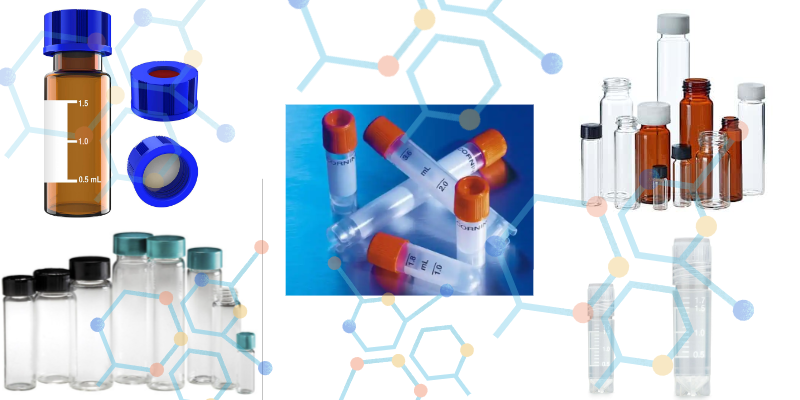

Common Vials and their uses.
There are multiple types of closure systems commonly used as vials. It’s a small container that can be made of glass or plastic and come in different sizes to be used as per the applications. Before selecting the vials for your product or samples, it is essential to consider which vials are to be used.
Glass vials are purer, meaning no traces of contamination, for example, metals, which can interfere with your samples. It is also highly heat resistant and is a common choice for many labs.
Plastic Vials, on the other hand, can be made up of two materials Polypropylene or polymethyl pentene (PMP). Polypropylene is a more popular plastic material. they are recyclable and have a heat resistance of up to 135 degrees Celsius.
On the other hand, PMP has higher heat resistance than polypropylene and is transparent, which helps increase the visibility of the product or sample in it.
Both glass and plastic vials have either clear or amber colours. The amber colour protects the samples from UV rays which may influence your sample otherwise.
Autosampler Vials
These are the vials designed to carry your samplers into the GC or HPLC equipment via the autosampler. Not all the autosampler vials are the same; therefore, you should consider the type of basis of the HPLC/GC equipment so your autosampler is not degraded/damaged.
These vials are manufactured both in glass and plastic. However, you might want to use amber borosilicate glass vials for UV light protection. And, for samples that might be sensitive to glass or stick with it, go for plastic vials.
Cryogenic Vials
These vials are designed to store samples/liquids at ultra-low temperatures. They are manufactured in different capacities and formats (sterile/non-sterile) and are suitable for cold storage or in the gas phase of liquid nitrogen storage. They are more commonly used for biological samples at minus 196 degrees Celsius and are usually made of special polypropylene, as you cannot use glass to store cryogenic samples/products.
Sample Vials
These are general-purpose vials for storage or transporting a range of specimens/samples. These can contain everything from oils to evidence and can be made of glass or plastic. They are also clear or amber and may also be autoclavable.
Glass vials can withstand high temperatures than plastic.
Scintillation Vials
These vials are designed to safely hold samples diluted in solvent cocktails for liquid scintillation counting or a technique to measure a sample’s radioactive activity. It can also be used for beta and gamma counting, sample counting and chromatography.
Transport Vials
These vials are used for the safe and secure transportation of specimens/samples from lab to lab and are designed to maintain the viability of enteric pathogens during transportation.